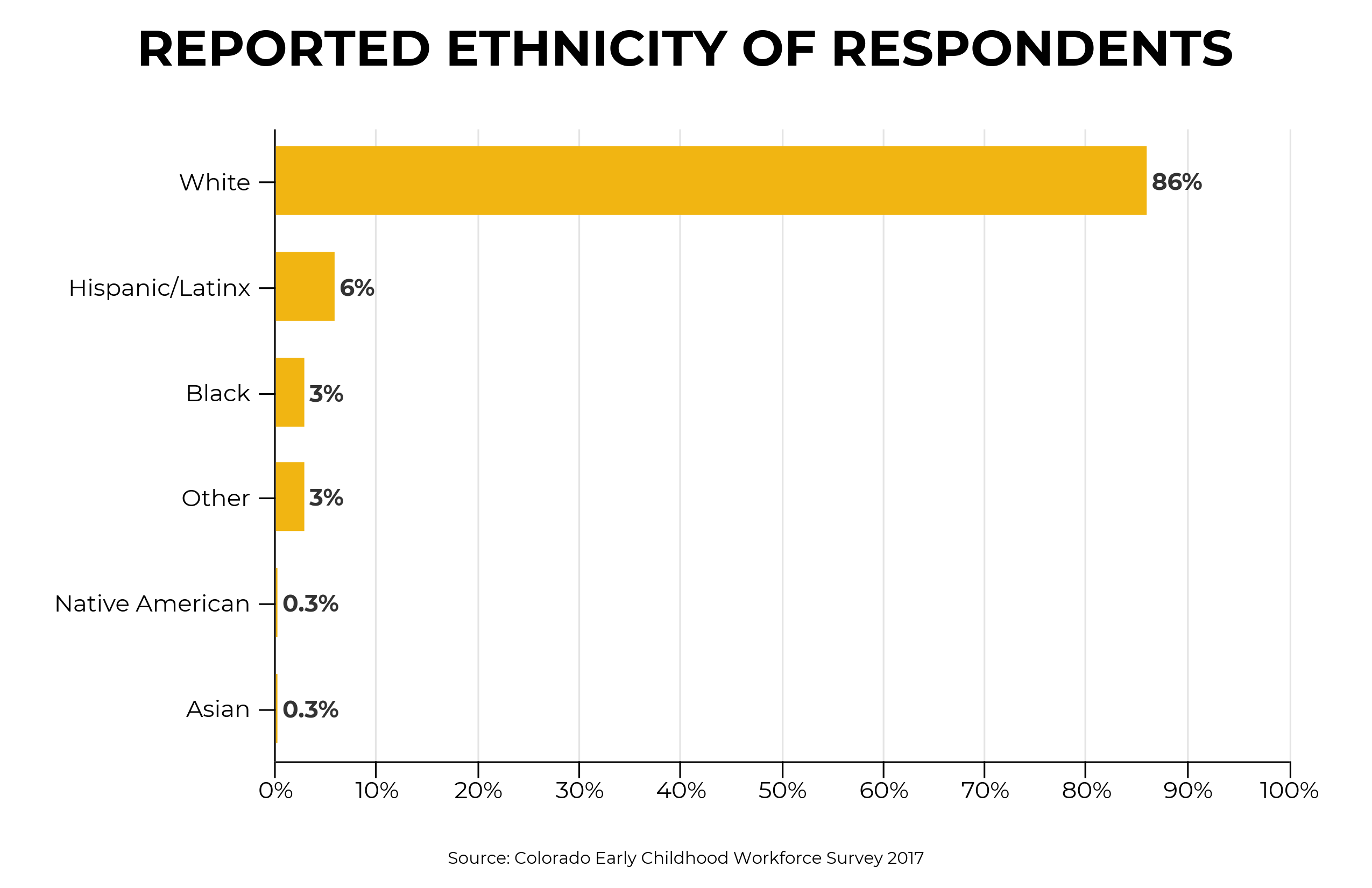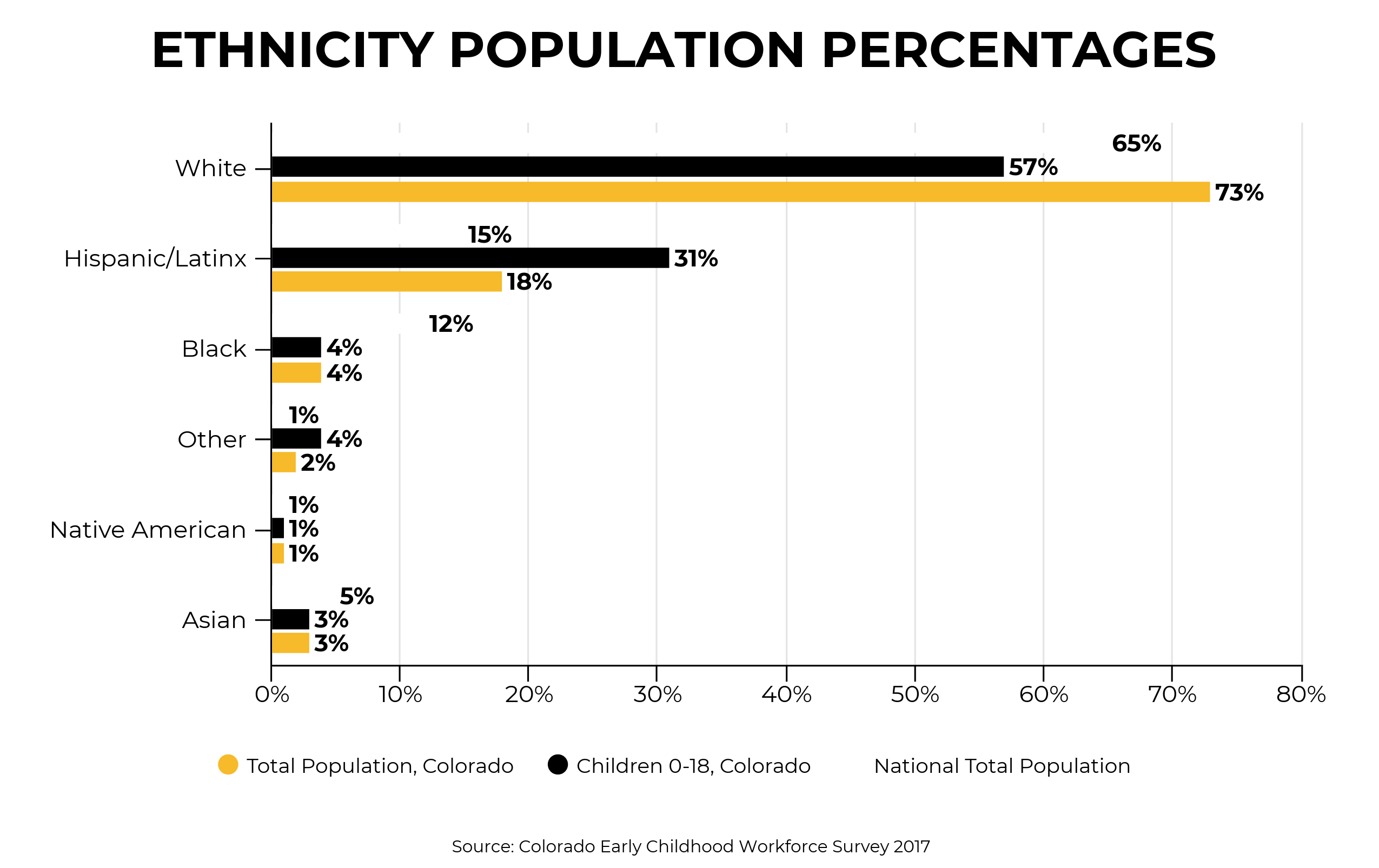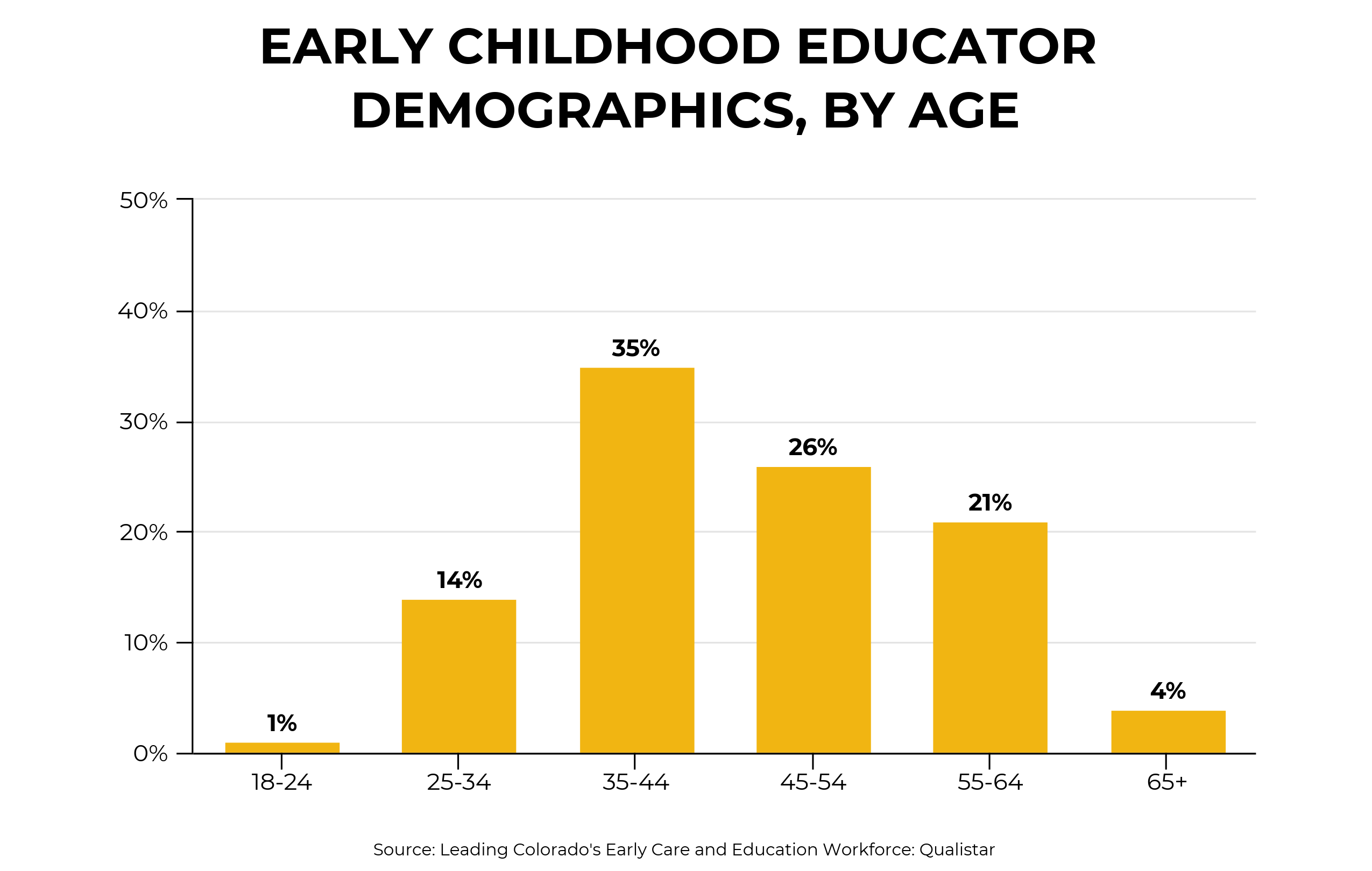Our Caring Workforce: Understanding Colorado’s Early Childhood Education Workers
Why Our Early Childhood Education Workforce Matters
The benefits of high-quality early childhood education (ECE) and care are well known and far reaching, but what is considered “quality”? According to the National Institute for Early Education Research, high-quality ECE is characterized by small class sizes; programs that focus on the development of the whole child (including social and emotional development); policies that expand access to typically disadvantaged children; and an adequately paid, skilled workforce that is diverse and consistent. These characteristics align with other definitions provided by the National Education Policy Center, and are the basis for research done around early childhood education and care.
Out of these aspects, research shows a skilled and educated early childhood education workforce is the most important factor when it comes to children’s learning environment in ECE settings. The importance of access to, and benefits of, quality ECE have been proven through decades of research, and yet the early childhood education workforce providing this crucial service can barely meet needs of its own.
Struggling with compensation, stress, and work-related satisfaction has an impact on educators ability to provide the necessary high quality care and education. It’s widely agreed upon the ECE system is underfunded and its educators are chronically underpaid for the work they do.
The early childhood education workforce requires a set of diverse skills, such as advanced problem solving, time management, public speaking, lesson planning, flexibility, and direction of a large group of high-maintenance individuals. On top of this demanding skill set, state education and certification requirements are increasing. These factors, combined with little pay and a high risk of job burnout, make it extremely difficult to attract and retain the quality ECE educators our children need.
Who Makes Up the ECE Workforce?
Colorado’s ECE field is home to around 20,000 licensed, paid care workers who serve over 406,000 children, aged birth through five. Early childhood care and education jobs aren’t standardized across the state nor field, and research has a hard time narrowing down titles that both accurately apply to positions and encompass all the roles and responsibilities. A title can change by the minute, from teacher to nurse to mediator, coach, counselor, and more.
However, the early childhood education workforce lacks representation and diversity, and has remained stagnant in its diversity growth. All the while, educators are are tasked with meeting the growing needs of a more diverse range of children, including those living in poverty, dual language learners, and children with special needs.


Results from the Colorado Early Care and Education Workforce Survey show, in addition to being predominately white and female, a majority (61 percent) of educators are aged 35 to 54, with an additional 25 percent aged 55 and older.

Roles Within the ECE System
The various titles within this field vary, but according to the Colorado Early Care and Education Workforce Survey child care positions fall under directors, assistant directors, lead teachers, and assistant teachers. Currently in Colorado, the requirements are just four ECE classes at the associate (A.A.) degree level to serve as a lead teacher, and two to 10 classes in ECE at the A.A. level to direct a small center or a large center, respectively.

Though the title “lead teacher” doesn’t require a degree in early childhood education (only classes within the field), the ECE workforce is still highly educated. In relation to educational attainment, 71 percent of this workforce holds an associate degree or higher, with about half holding at least a bachelor’s degree.
Of those who don’t have a degree, 22 percent have taken some college classes related to early childhood education. These educational attainments don’t equate to professionalism, with those holding graduate degrees making less than five dollars more than their counterparts with only a high school education.

Conditions Within the ECE Workforce
Though this critically important workforce is responsible for educating Colorado’s children, work conditions are not ideal. The following are some of the challenges hindering economic mobility within this workforce.
Low Compensation
Historically, the early childhood care workforce has been chronically underfunded. Low wages, often at or near poverty level, have been characteristics of these jobs for years, even compared to similar careers. In 2015, the mean Colorado salary for an ECE worker was half of an elementary school worker, making just $25,065 compared to $50,332.

Similar to the federal poverty level, the ECE workforce often finds itself far below levels of self-sufficiency as well. Self-sufficiency is defined as the wages needed to meet the cost of basic needs. Using the self-sufficiency standard for one adult, one preschooler, and a school-age child in 2015, ECE workers fall behind even in the lowest cost counties in Colorado (the self-sufficiency standard ranged from $32,530 to $74,213 across Colorado counties).
The 2017 median hourly wage in the state of Colorado was just $12.60 for a child care worker and $13.88 for a preschool teacher. These wages have remained stagnant, only increasing by 7 percent and 3 percent, respectively, since 2015. For a comparison, kindergarten and elementary school teachers the same year made more than double this, with median hourly wages of $27.68 and $28.71, respectively.

Nearly half of early childhood educators rely on public benefit programs to assist in meeting their basic needs. Thirty-two percent of Colorado’s early care and education workers and their families report receiving at least one form of public assistance. When considering this profession is viewed as a direct way to lift children out of poverty, and the work has direct and long-lasting impacts, it’s unacceptable that the job itself is responsible for generating and perpetuating cycles of poverty for educators and their families.
High Rates of Turnover
Child care and ECE centers experience turnover at a rate of about 30 percent per year, four times higher than the turnover rate of elementary school teachers. The physical demands of the job, combined with low compensation and often a lack of benefits, have contributed to high turnover. Turnover can lead to several direct costs, including job marketing and the time spent on the interview process, hiring, and new employee training. This takes funding away from educating children, and instead funnels it toward addressing the preventable issue of employee retention.
However, the worst costs of turnover are those borne by children. Children thrive under stability and consistency, and the classroom is no exception to this. A secure, attached relationship with an early childhood care provider or educator is a key component to the delivery of high quality care. This relationship is crucial to social interaction development and helps children to gain needed social, academic, and life skills that are linked to future successes in academics and beyond. This necessary form of stability is difficult to achieve in the current setup of the formal ECE system.
High-quality early childhood education is linked to many positive outcomes for children, educators, and their families. Better health, positive relationship building, and higher earning potential are just the beginning.
In order to be considered truly high-quality, this critical field requires some necessary adjustments. The workforce responsible for shaping and developing the future generations is struggling to get by, and that is a problem that needs to be solved.
Investing in early childhood care and education via the educator workforce proves to promote social and emotional health benefits, as well as economic benefits for workers, families, and the overall Coloradan economy. Learn more about what some solutions might help by reading the next iteration in this series, Caring for Our Caring Workforce: Strengthening the Early Childhood Education Workforce.
